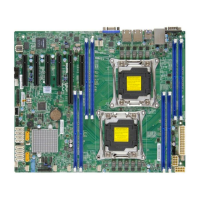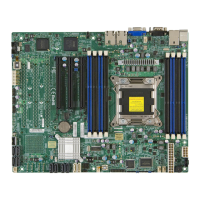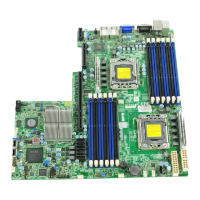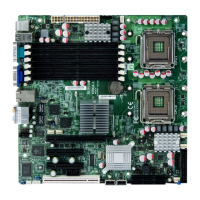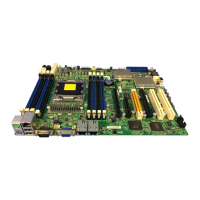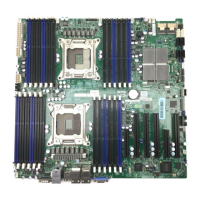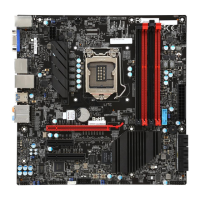Chapter 4: AMI BIOS
4-9
Select Disabled to disable power-saving settings. The options are Disable, Energy
Efcient, and Custom.
If the option is set to Energy Efcient or Custom, the following items will display:
Cong TDP (Conguring Thermal Design Power)
Select Enable to congure TDP power settings to enhance thermal management.
The options are Enable and Disable.
Cong TDP Level (Available when Cong TDP above is set to Enable)
Use this item to set TDP conguration level to enhance thermal management.
The options are Nominal, Level 1, and Level 2.
CPU P State Control (Available when Power Technology
is set to Custom)
EIST (P-states)
EIST (Enhanced Intel SpeedStep Technology) allows the system to automatically
adjust processor voltage and core frequency to reduce power consumption and
heat dissipation. The options are Disable and Enable.
Turbo Mode
Select Enabled to use the Turbo Mode to boost system performance. The options
are Enable and Disable.
P-state Coordination
This feature is used to change the P-state (Power-Performance State) coordi-
nation type. P-state is also known as "SpeedStep" for Intel processors. Select
HW_ALL to change the P-state coordination type for hardware components only.
Select SW_ALL to change the P-state coordination type for all software installed
in the system. Select SW_ANY to change the P-state coordination type for a soft-
ware program in the system. The options are HW_All, SW_ALL, and SW_ANY.
CPU C State Control (Available when Power Technology
is set to Custom)
Package C State limit
Use this item to set the limit on the C-State package register. The options are
C0/1 state, C2 state, C6 (non-Retention) state, and C6 (Retention) state.
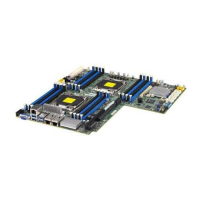
